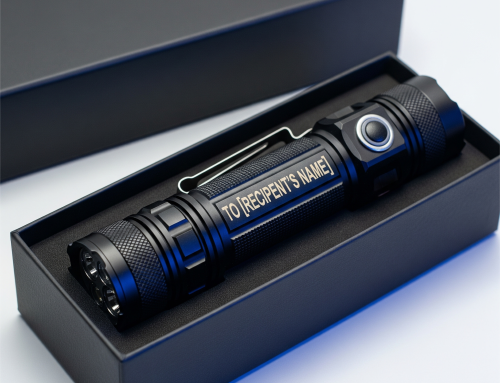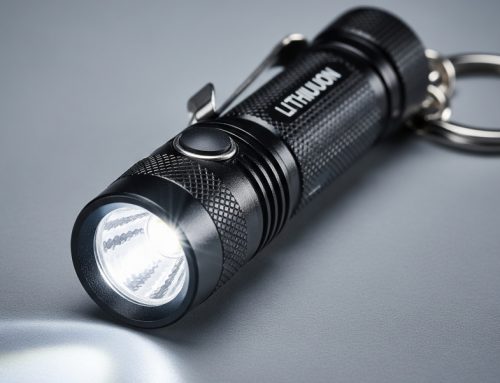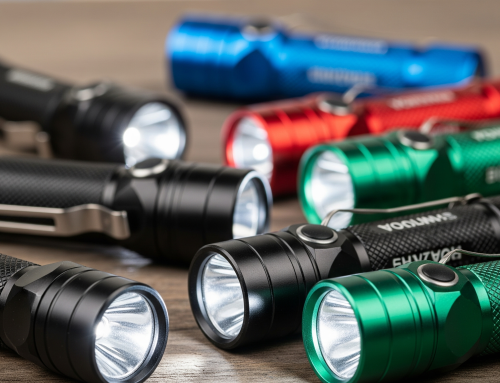In the world of criminal investigations, the search for hidden evidence is critical to solving cases and securing justice. Traditional investigative methods, while valuable, can sometimes overlook subtle or hidden clues. This is where ultraviolet (UV) flashlights become invaluable tools in forensic science. UV flashlights allow investigators to reveal hidden evidence that is invisible under normal light, aiding in the detection of trace materials, bodily fluids, and other important forensic markers. This article explores the essential role of UV flashlights in forensic investigations and highlights their practical applications in solving crimes.
What Makes UV Flashlights Important in Forensic Science?
Ultraviolet light, which falls just outside the visible spectrum, has unique properties that make it highly effective in forensic investigations. UV light causes certain materials to fluoresce or glow when exposed, a phenomenon that is not visible under regular lighting. This allows forensic investigators to identify critical pieces of evidence—such as bodily fluids, fingerprints, and trace materials—that would otherwise be difficult or impossible to see.
UV flashlights typically emit light in the 365nm to 395nm range, which is optimal for causing fluorescence in specific materials. These flashlights are portable and powerful, making them an essential part of an investigator’s toolkit when searching for hidden clues at crime scenes.
Applications of UV Flashlights in Forensic Investigations
1. Detecting Bodily Fluids
One of the primary applications of UV flashlights in forensic science is the detection of bodily fluids. Blood, semen, saliva, and urine can often hold crucial DNA evidence that links a suspect to a crime. However, these fluids can sometimes be difficult to spot, especially if they have been cleaned or hidden. Under UV light, bodily fluids can fluoresce, making them visible to forensic professionals.
Forensic investigators use UV flashlights to locate blood stains on various surfaces, such as clothing, carpets, or bedding. Even if the blood has been wiped away or cleaned up, UV light can reveal residual traces, providing valuable evidence for DNA analysis.
2. Revealing Trace Evidence
Trace evidence such as fibers, hairs, gunshot residue, and small particles can be critical in linking a suspect to a crime scene. However, these materials are often tiny and difficult to spot with the naked eye. UV flashlights are effective in detecting these trace materials, as certain fibers and particles fluoresce under UV light.
For example, fibers that may have transferred from a victim to a suspect, or from one location to another, can be revealed under UV light. Similarly, tiny particles or gunshot residue that might have been transferred during a crime can become visible, aiding in the investigation process.
3. Uncovering Latent Fingerprints
Latent fingerprints, which are left behind by the oils and sweat on a person’s fingers, are often invisible under normal conditions. While traditional methods like fingerprint powders and chemicals can be used to reveal prints, UV flashlights can sometimes make prints visible on surfaces where traditional methods are less effective.
UV light can cause certain chemical treatments or fingerprint powders to fluoresce, making it easier to detect and document fingerprints that might otherwise be missed. This is especially useful for identifying prints on non-porous surfaces such as metal, glass, or plastic.
4. Detecting Forged Documents and Counterfeit Currency
UV flashlights are also useful for detecting counterfeit documents and money. Many legitimate documents, such as passports, IDs, and banknotes, include security features like UV-reactive inks, watermarks, and invisible threads that can only be seen under UV light.
Forensic professionals can use UV flashlights to verify the authenticity of documents and currency. For example, banknotes often have UV-responsive features, which will glow under UV light, providing a quick way to identify counterfeit currency.
5. Identifying Explosives and Gunshot Residue (GSR)
Gunshot residue (GSR) is another type of critical forensic evidence. UV light can help reveal these residues, which can be found on a person’s hands, clothing, or nearby surfaces after firing a weapon. Some GSR particles fluoresce under UV light, making them visible to forensic investigators.
Similarly, certain explosive materials may fluoresce when exposed to UV light, helping investigators detect residues left behind from detonated explosives. This can be crucial in bombings, terrorist activities, or other criminal events involving explosives.
Why UV Flashlights are Crucial for Forensic Investigations
1. Non-Damaging and Non-Invasive
UV flashlights offer a non-invasive method for detecting hidden evidence without altering or damaging the materials at the crime scene. Unlike chemical treatments or other forensic methods that may alter evidence, UV light simply illuminates it, preserving the integrity of the crime scene and the evidence collected.
2. Sensitivity to Specific Evidence
UV flashlights are highly sensitive to certain materials, enabling forensic investigators to detect even the smallest traces of evidence. Whether it’s a microscopic bloodstain or a single fiber, UV light can reveal these traces with remarkable accuracy, making it an essential tool for solving complex cases.
3. Speed and Efficiency
In criminal investigations, time is often of the essence. UV flashlights allow forensic experts to quickly scan large areas for hidden evidence, saving valuable time and ensuring that important clues are not overlooked. The ability to identify critical evidence quickly helps investigators build stronger cases and solve crimes more efficiently.
4. Portability and Ease of Use
UV flashlights are compact, lightweight, and portable, making them easy to use in various environments. Whether the investigation takes place in a house, vehicle, or outdoor crime scene, UV flashlights are convenient for forensic professionals to carry and use at a moment’s notice.
Choosing the Right UV Flashlight for Forensic Use
When selecting a UV flashlight for forensic investigations, there are several key factors to consider:
- Wavelength: The effectiveness of UV flashlights varies depending on the wavelength they emit. For forensic use, a flashlight with a wavelength between 365nm and 395nm is ideal for revealing bodily fluids, fibers, and other key evidence.
- Intensity: A high-intensity UV flashlight is necessary to ensure sufficient illumination for detecting evidence in large areas. Adjustable light settings are also beneficial for different environments.
- Durability: Given the often rugged conditions in which forensic investigations take place, choosing a durable, shock-resistant UV flashlight is important for reliable performance.
- Portability: Lightweight and easy-to-carry designs make UV flashlights convenient for forensic experts on the move.
Why Tank007 UV Flashlights are the Perfect Choice for Forensic Investigations
At Tank007, we offer a wide range of UV flashlights designed to meet the demands of forensic experts. Our UV flashlights are built with quality materials and offer exceptional performance for uncovering hidden evidence. Key features of our UV flashlights include:
- Optimal Wavelengths: Our flashlights emit the ideal wavelengths for revealing bodily fluids, fingerprints, fibers, and other essential forensic evidence.
- High Light Intensity: With powerful UV light, our flashlights provide excellent illumination, allowing forensic investigators to detect even the smallest traces of evidence.
- Durability and Reliability: Designed to withstand the rigors of crime scene investigations, Tank007 UV flashlights are tough, shock-resistant, and built to last.
- Portability: Compact and lightweight, our UV flashlights are easy to carry, making them ideal for forensic professionals who need a reliable tool on the go.
Visit Tank007.com to explore our full range of UV flashlights and learn how our products can help forensic professionals uncover hidden clues and solve cases with confidence. With Tank007, forensic investigators can rely on cutting-edge technology to detect critical evidence and deliver justice in every case.



